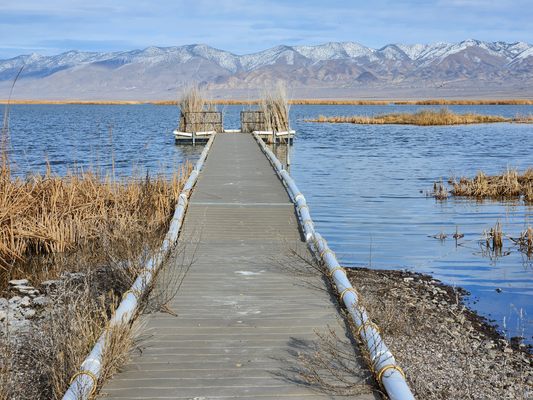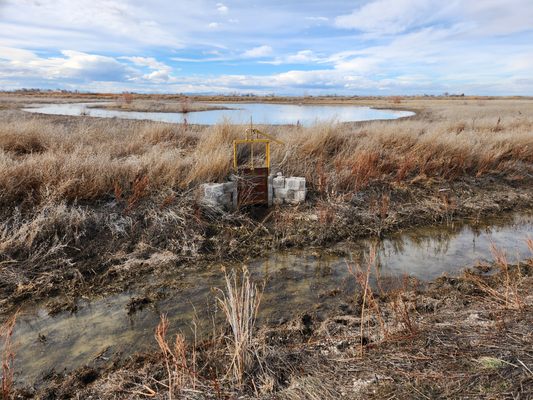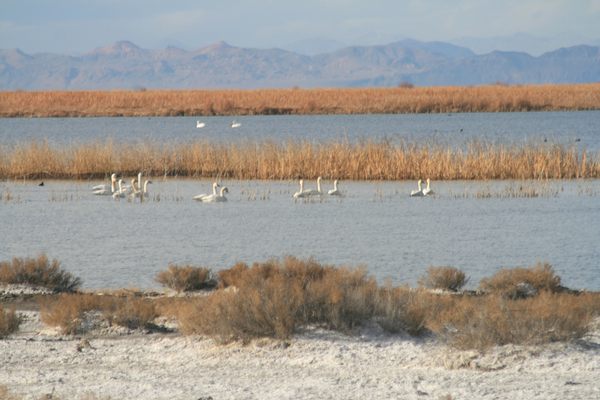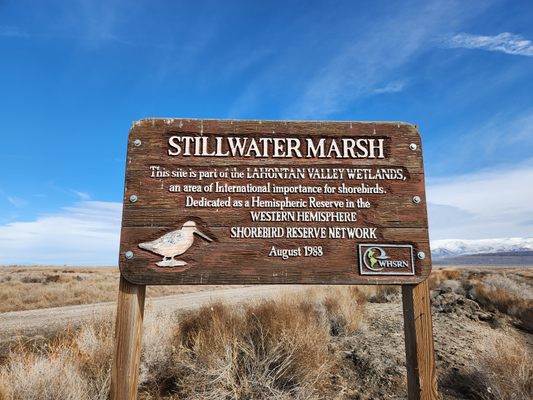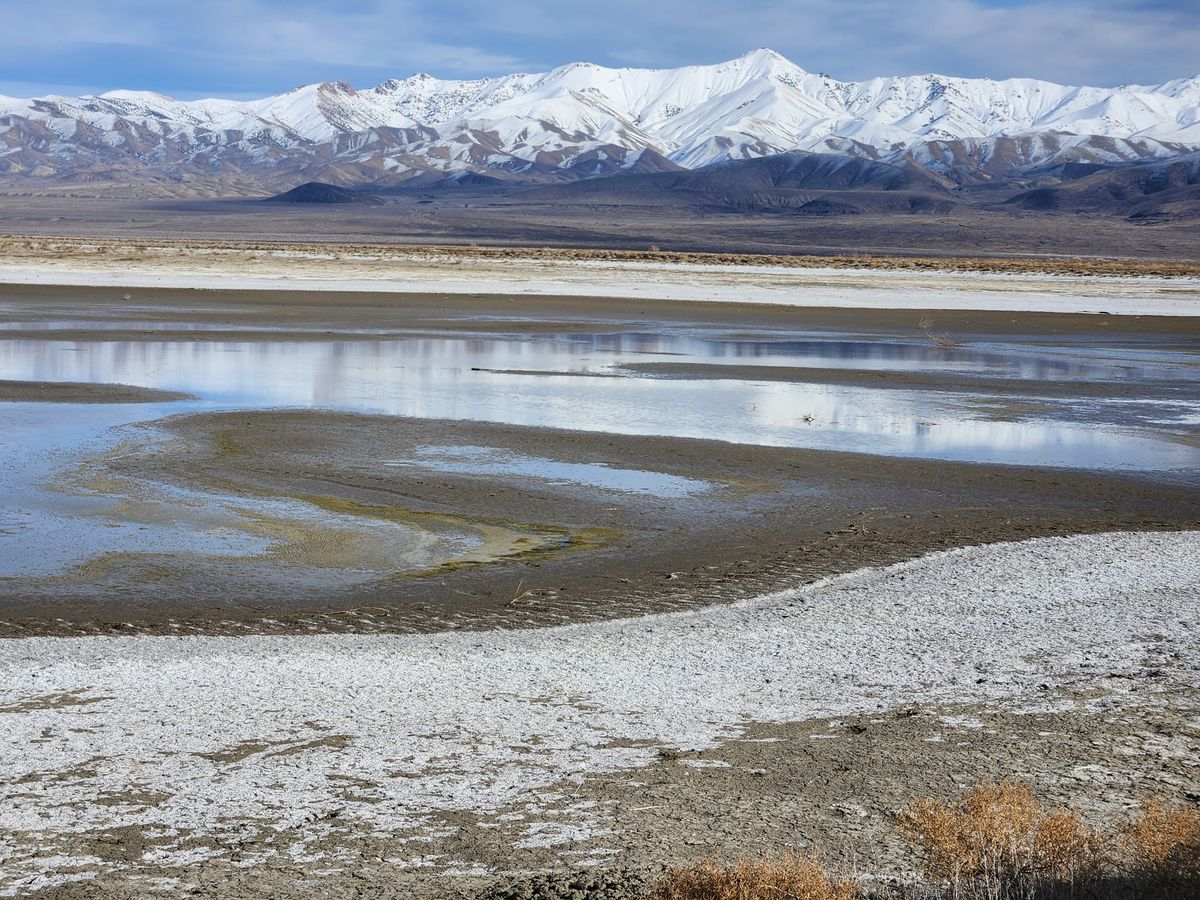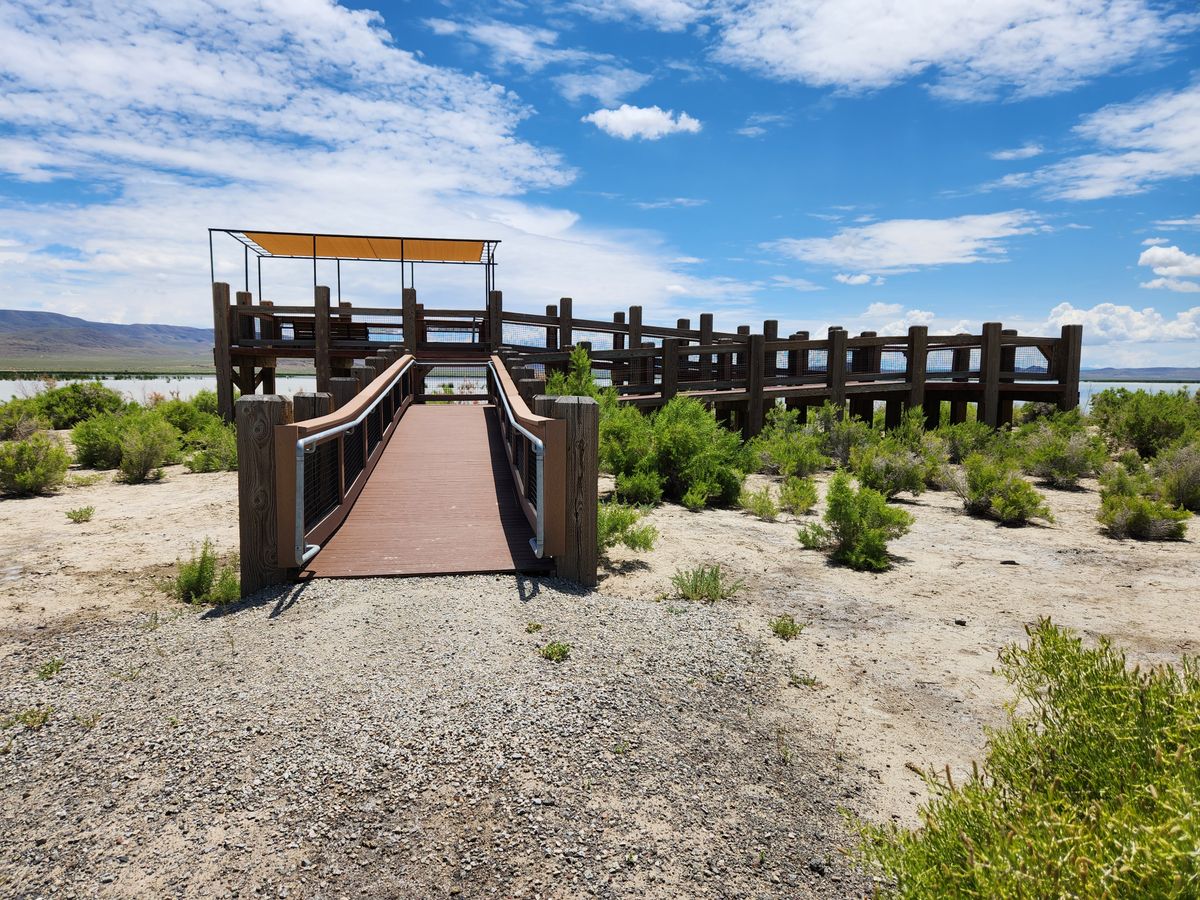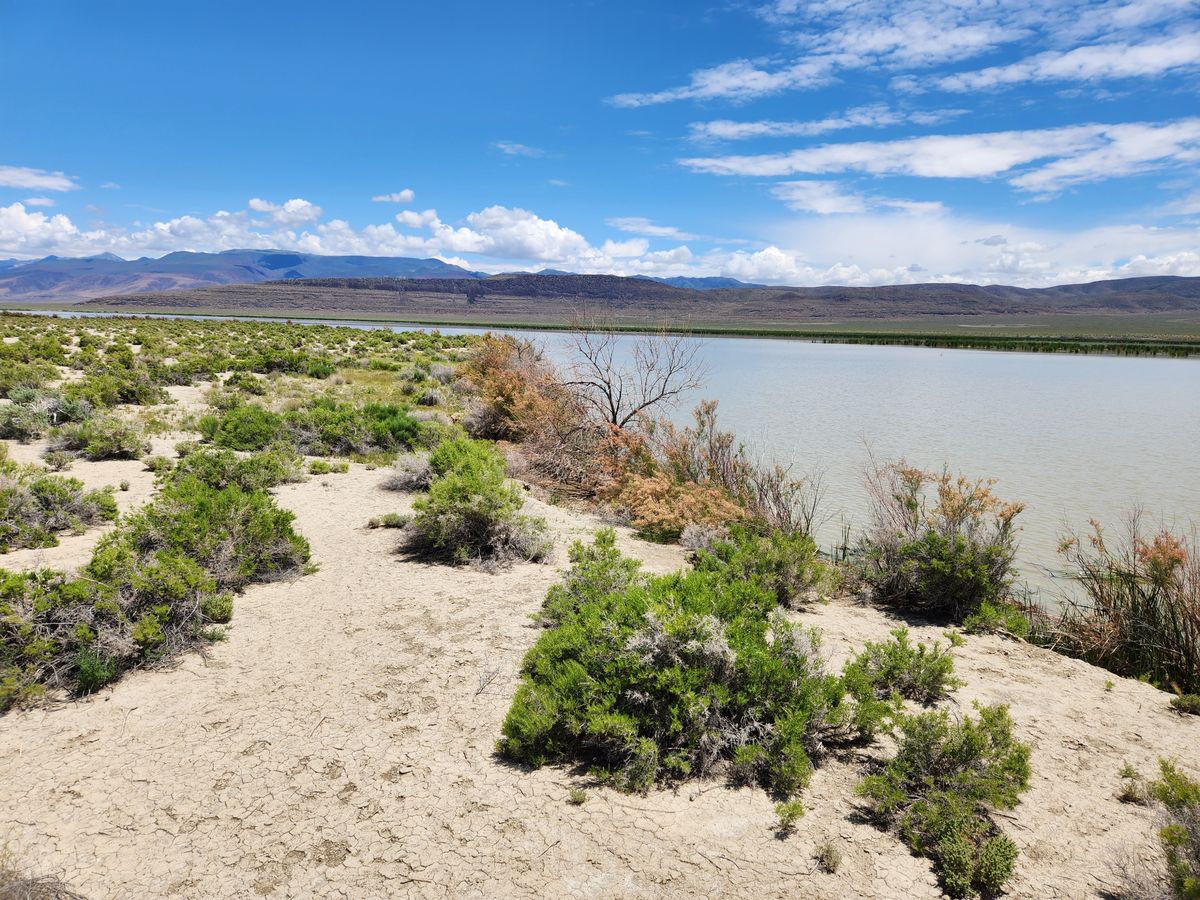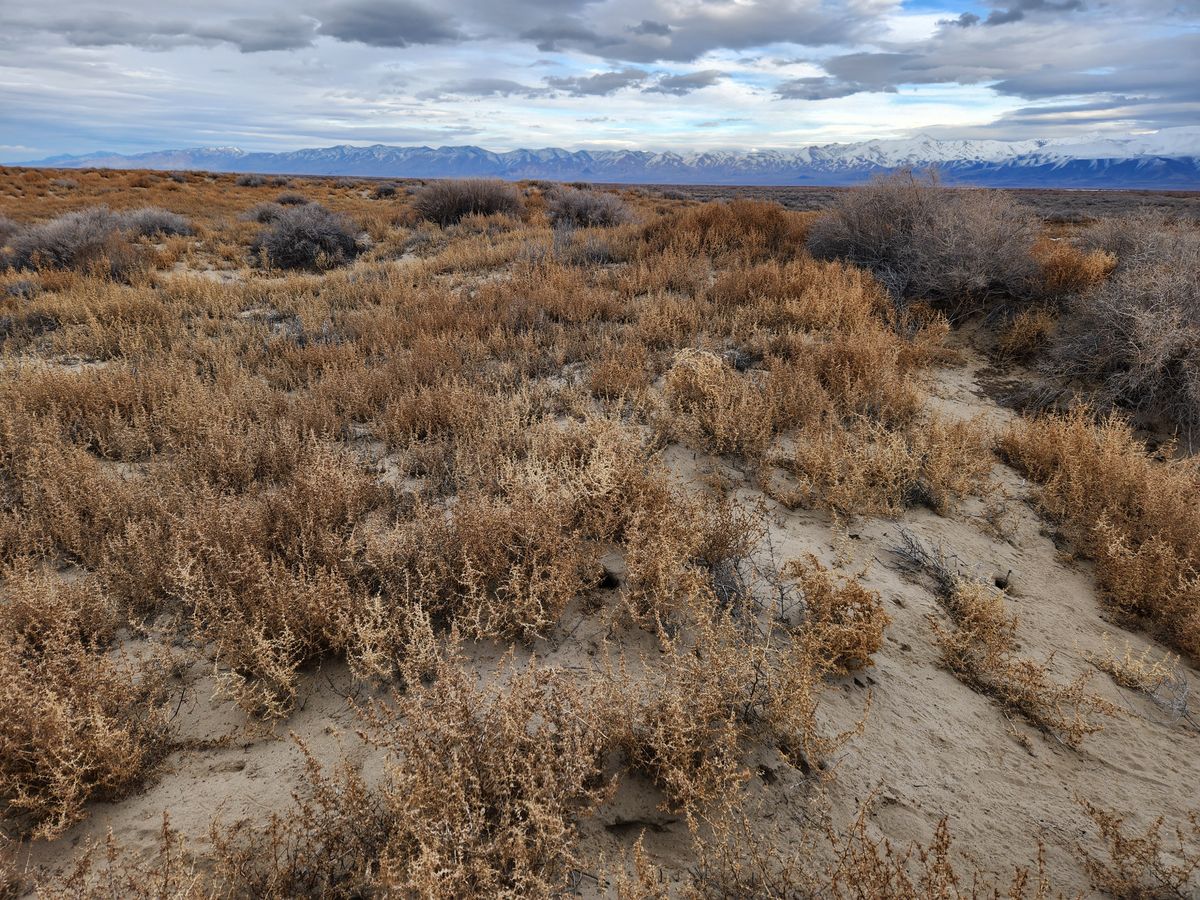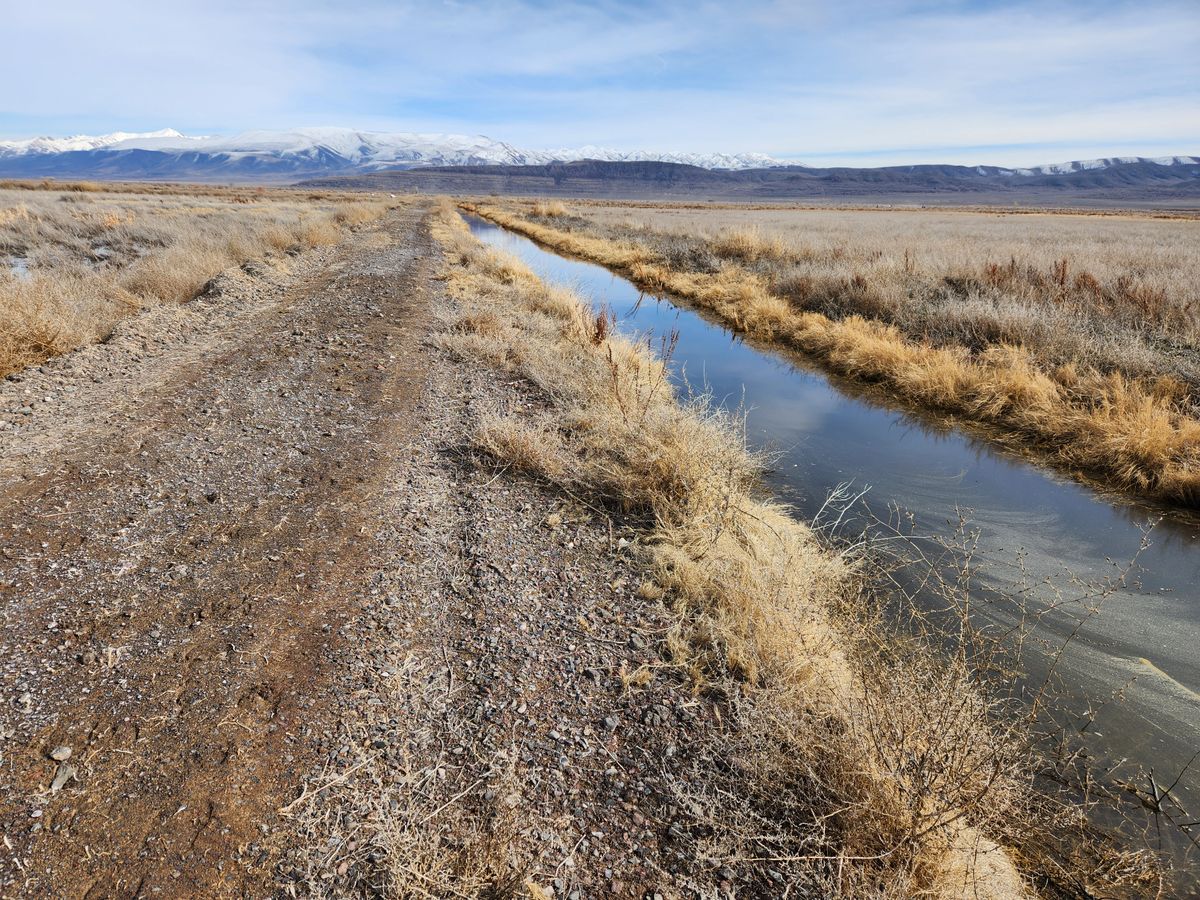About
The Carson River forms at the south end of Carson Valley, near the California-Nevada border, by the confluence of the East and West Carson Rivers, both of which rise in California's Sierra Nevada. It ends at the Carson Sink about 70 miles east-north-east of Carson City, Nevada. The sink is defined on the east by the massive Stillwater Range, with a high point at Job Peak (8,785 feet). In turn, it is part of the enormous basin of Pleistocene Lake Lahontan, which covered much of western Nevada some 12,000 years ago.
Historically, the Carson Sink was a large wetland that was extremely important to local wildlife. The water bodies included shallow ponds ranging from fresh to saline, as well as marshes, sloughs, mudflats, and intervening low uplands with scattered greasewood bushes. The wetlands were also vital to early and historical Indigenous inhabitants, and extensive archeological investigations have shown that human populations were dwelling here about 3,200 years ago.
Euro-American settlement, beginning ca. 1860, wrought profound changes in the wetland environment. Introduced fish species, carp especially, devastated native populations. More importantly, diversions for irrigation progressively shrank the Stillwater ponds and marshes by reducing the freshwater inflow. The most extensive--and catastrophic--changes came from the large-scale diversions due to the Newlands Project.
The Stillwater Wildlife Management Area was established in 1948, initially as a cooperative venture between the Truckee-Carson Irrigation District, the Nevada Department of Fish and Game (now the Nevada Department of Wildlife), and the US Fish and Wildlife Service. Canals and ponds were constructed to help restore the Stillwater Marshes.
In 1990 it became Stillwater National Wildlife Refuge, with expanded boundaries and fully under the management of the US Fish and Wildlife Service. Most importantly, the refuge received official water rights. The increased inflows have resulted in the stabilization of pond levels, the re-establishment of fish populations, and the return of fish-eating bird species such as pelicans.
Stillwater National Wildlife Refuge, unsurprisingly, is a critical link in migratory routes. It has also been recognized as a Globally Important Bird Area by the American Bird Conservancy, and as a Hemispheric Reserve in the Western Hemisphere Shorebird Reserve Network.
Related Tags
Know Before You Go
The main entrance to the Stillwater National Wildlife Refuge is off US-50 east of Fallon, Nevada. Take US 50 4.7 miles east of its intersection with US-95N in Fallon and turn left on Nevada State Route 116. This junction occurs where US-50 makes a shallow bend to the south; keep going straight. SR-116 makes several right-angle bends, but just stay on the pavement. Where the pavement ends, after about 11.2 miles, is the edge of the refuge. There are some informational signs about the Refuge here. A network of graded roads spans the refuge, and there are a couple of places where primitive overnight camping ("boondocking") is permitted. Roads closed to motorized travel by the public are open to hiking. In addition, several interpretive trails are also open to hiking, as well as a number of blinds for wildlife observation.
Community Contributors
Added By
Published
June 7, 2024








